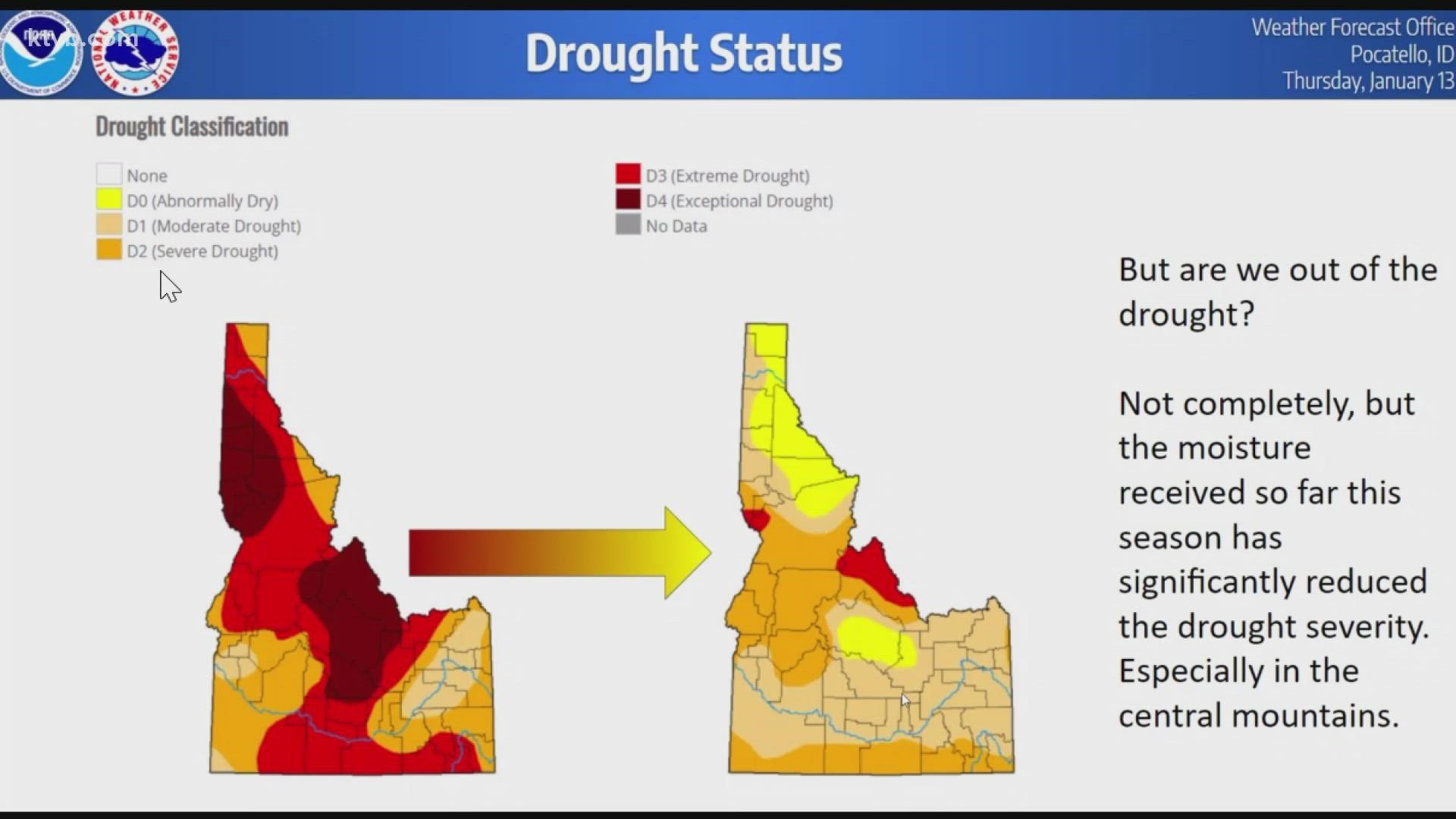BOISE, Idaho — This story originally appeared in the Idaho Press.
At the beginning of October, most of Idaho sat parched following a summer of drought. But fall and winter storms, especially in December, brought much-needed moisture, bolstering the snowpack across the state and increasing the chances that most of the state and neighboring regions will have near normal water availability this spring, experts said at a virtual meeting Thursday morning.
“We’re off to a good start in most basins and we’ve increased our odds to see above normal snowpack in most cases, but we’re not out of the woods yet,” said Daniel Tappa, a hydrologist with the National Resources Conservation Service. “There are still scenarios in which we could see above or below normal snowpack.”
As of Jan. 13, data from all but one of the state’s 21 water basins showed above-average snow water equivalent, or snowpack, compared to normal, according to a map produced by the USDA/NRCS National Water and Climate Center. The Boise River System is at 122% of normal snow water equivalent, while the Big Lost Basin, west of Idaho Falls, is at 139% of normal. The Bruneau River Subbasin, southeast of Boise along the Idaho-Nevada border, is at 98% of normal.
Right now, a ridge of high pressure has brought below-average precipitation and above-normal temperatures to most of the state, and is predicted to stay positioned over the state through the end of January, said Link Crawford, a hydrologist with the National Weather Service.
Every day that the state does not get precipitation, snow levels can be expected to decrease, Tappa said. But even if snowpack decreases in the coming weeks, starting at higher-than-normal snowpack will likely help basins stay at or above normal snowpack, Tappa said.
In addition, this year is predicted to be a more favorable La Niña year than last year. Historically, about two in three La Niña years bring above-average precipitation, which results in above-average snowpack on April 1, Crawford said. But that was not the case last year. Snowpack was in good shape in March, Crawford said, but then the state saw one of the driest springs since 1924, said David Hoekema, a hydrologist with the Idaho Department of Water Resources.
“It just seemed like the snow machine shut off,” Crawford said.
Less precipitation combined with above average temperatures sent most of the state into a drought and resulted in less runoff for irrigation customers, with irrigation districts often having to shut off water early.
“Hopefully, it won’t be as dry as last year,” Crawford said.
“I think because La Niña has been so influential this season, I’m thinking that in February, March, we’re doing pretty well,” Crawford said. “After that, I don’t know. These climate outlooks sometimes don’t do so well ... it’s the best we can do at this point.”
This year, water flowing from the state’s reservoirs is predicted to be near normal in most places, said Geoffrey Walters, senior hydrologist at the Northwest River Forecast Center. For example, in the Boise River System, which serves irrigation customers in the Treasure Valley, flows are predicted to be 108% of normal, according to a chart Walters presented at the meeting.
As of Jan. 11, the Owyhee Reservoir, which serves irrigation customers in Eastern Oregon, was 46% full. That reservoir can hold up to a two-year supply of irrigation water, which allowed farmers in that region to survive the dry 2021 summer despite hot conditions and a lack of precipitation. Going into this spring, it isn’t clear if it will fill back to capacity, but it’s predicted to provide good runoff for the summer, said Ryan Hedrick, a hydrologist with the Bureau of Reclamation.
The group of experts will meet again in February to discuss the latest conditions, Hoekema said.
This story originally appeared in the Idaho Press, read more on IdahoPress.com.
Watch more Local News:
See the latest news from around the Treasure Valley and the Gem State in our YouTube playlist:

